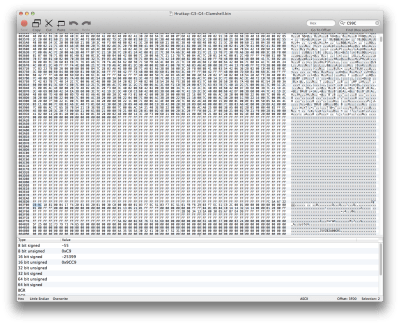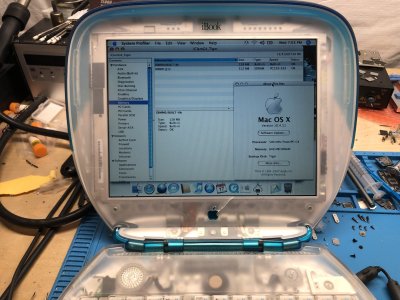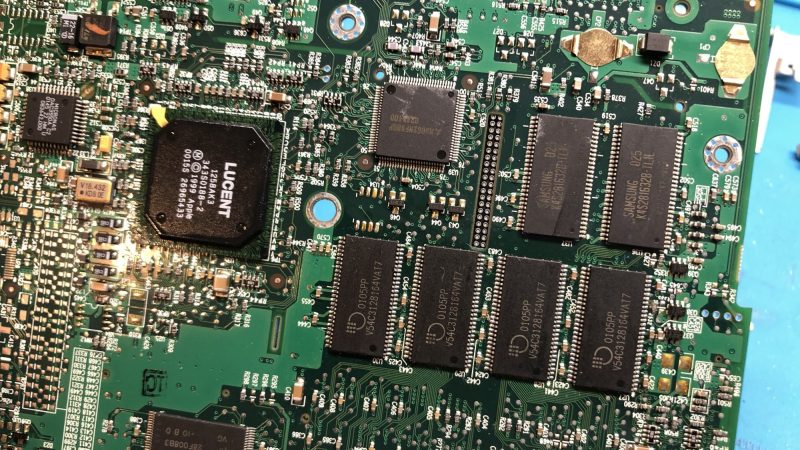In the retrocomputing world, [DosDude1] is a name spoken with more than a little respect. He’s back again with a long-awaited hack for PowerPC Macintosh: soldered RAM upgrades!
[DosDude1] is no stranger to soldering his way to more storage– upgrading the SSD on an M4 Mac Mini, or doubling the VRAM on an old GPU. For a PPC Mac, though, it is not enough just to solder more RAM onto the board; if that’s all it was, we’d have been doing it 20 years ago. Once the RAM is in place, you have to have some way to make sure the computer knows the RAM is in place. For a WinTel machine, getting that information to the BIOS can be as easy as plugging in the right resistors.

PowerPC Macintoshes don’t have BIOS, though. Instead, what’s required is a hack to modify the machine’s BootROM, and write an edited version back into the motherboard’s EEPROM. No one knew how to make that work, until now. [DosDude1] credits a document discovered by [LightBulbFun] on “Boot Flash System Configuration Block” for the secret sauce to hacking the HEX configuration. For example, adding four more 128 MB DIMMS to max out an iBook G3 was a matter of finding the Hex value for number of soldered chips–apparently it was at offset 0x5C. Change this from 0x01 to 0x02 tells the board to look for all 6 chips. Then it’s a matter of flashing the edited hex dump EEPROM, which can be done with a programmer or the flashrom command under Linux.

While a few extra hundred MB of RAM isn’t exactly bringing this machine into the 21st century, it is a great quality-of-life upgrade to make old budget hardware match the best of the era. This isn’t magic: if you’re increasing the density, rather than filling up footprints as [DosDude1] demonstrates, you’ve got to make sure the board has got address lines to spare or there’s a way to bodge them in. (128 MB was the max for this one.) The footprints obviously have to match, too, and so do the specs. You’re not going to be putting extra gigabytes of DDR5 into a machine designed with OS9 in mind, but then, you probably don’t need to. It’s already got more than 640 KB, after all, and that’s enough for anybody.
Found via r/VintageApple on Reddit.
















I’ve done this to a 2001 Haar CNC machine to add a whopping 15mb of RAM. Makes a massive difference in being able to use modern CAM paths without having to drip feed the system. Thankfully it was immediately recognized no software update required.
MacOS 9.x can use up to 1GB of RAM, I think, so it makes sense.
Way back in 2002 or so the configuration wasn’t unheard of.
Especially Photoshop users had a use for high-end Powermacs.
Photoshop even support dual-CPU operating.
Some Macintosh clones had two or more processors.
Correction. It apparently can ddress up to 4GB, but about 1,5GB can be used as RAM.
https://macos9lives.com/smforum/index.php?topic=2101.msg10763#msg10763
I’m rather impressed. My tangerine iBook/300 came with 96MB of RAM (32 onboard + 64 SODIMM). I later expanded it to 288MB with a 256MB SODIMM. For Mac OS 9.1 (the last I ever ran on it), that was fine!
It was a classic minimalist Apple product with just 1 USB port! But it was cuddly and I really liked the handle!
Hi, that’s cool! If you have enough physical RAM, you can disable virtual memory in Mac OS 8.6/9.0.
That should improve performance even more, I think.
Mac OS X “Tiger” 10.4.x can run on 256MB RAM on a G3, too.
Though it’s a bit heavier, of course.
If Classic Environment is used, then extra memory is always welcomed.
Though it uses double-buffering on Tiger, or so I heard,
so it’s slower running and less smooth than on OS X “Jaguar” 10.2.
This version was quite good, if it only wouldn’t be so dated by now..
I never got to try Mac OS X on the tangerine, because sadly (and perhaps stupidly) I sold it in spring 2002. A workmate’s friend (or girlfriend) was interested in it. Also, I wanted an iBook that supported Firewire so I could do a bit of DV editing (with a Canon MV500), and the iBook/600 had just come out.
The iBook/600 lasted quite a while, but the graphics chip started to flake-out, which was a classic fault. However, I could be wrong there, the LCD cable flex also has issues and that could have been it instead.
Hi, I think I can relate to that a little bit.
An iBook G3 of mine also had developed a graphics issue eventually, which rendered it unusable on OS X.
However, Mac OS 9.2 still ran without graphical glitches most of time, so I could still use it.
I assume the difference was that Mac OS 9.x more or less used the graphics chip as a dumb framebuffer,
while Mac OS X 10.2 and higher being more sophisticated tried to use 2D/3D acceleration.
Anyway, it wasn’t that tragic. Many applications at the time had been available as Carbon applications and could run on Mac OS 8.6 and higher.
From an aesthetical point of view it was a loss, though.
The Aqua interface of OS X 10.4 and earlier was very pretty to look at.
It was a fine companion to the colorful Clamshell design.
(Yes, I know.. Mac OS 8/9 had third-party GUI themes, too.)
Fun to see some DRAM chips from a company that I used to work for: Mosel Vitelic. I was a Memory Test Engineer there from 1985 to 2009, when the US office was shuttered. I created test programs for SRAM, DRAM, FIFO and a couple of application specific memories. I also worked for Samsung but that was for an MRAM group.